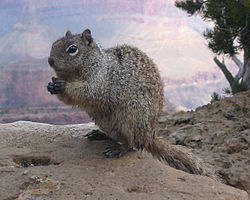| Travancore flying squirrel | |
|---|---|
| Scientific classification | |
| Kingdom: | Animalia |
| Phylum: | Chordata |
| Class: | Mammalia |
| Order: | Rodentia |
| Family: | Sciuridae |
| Genus: | Petinomys |
| Species: | P. fuscocapillus |
| Binomial name | |
| Petinomys fuscocapillus (Jerdon, 1847) | |
| Synonyms | |
Sciuropterus layardi Kelaart, 1850 Contents | |
Travancore flying squirrel (Petinomys fuscocapillus) is a flying squirrel found in Sri Lanka and the Western Ghats of South India. Travancore flying squirrels were thought to be extinct but were rediscovered in 1989 after a gap of 100 years in Kerala (Nanayakkara et al. 2013). It was subsequently confirmed to also be present in Sri Lanka after 78 years (Nanayakkara et al. 2013). The animals were reported only in wet and intermediate zones of the island, and had a few sightings in the Sinharaja Forest Reserve.



